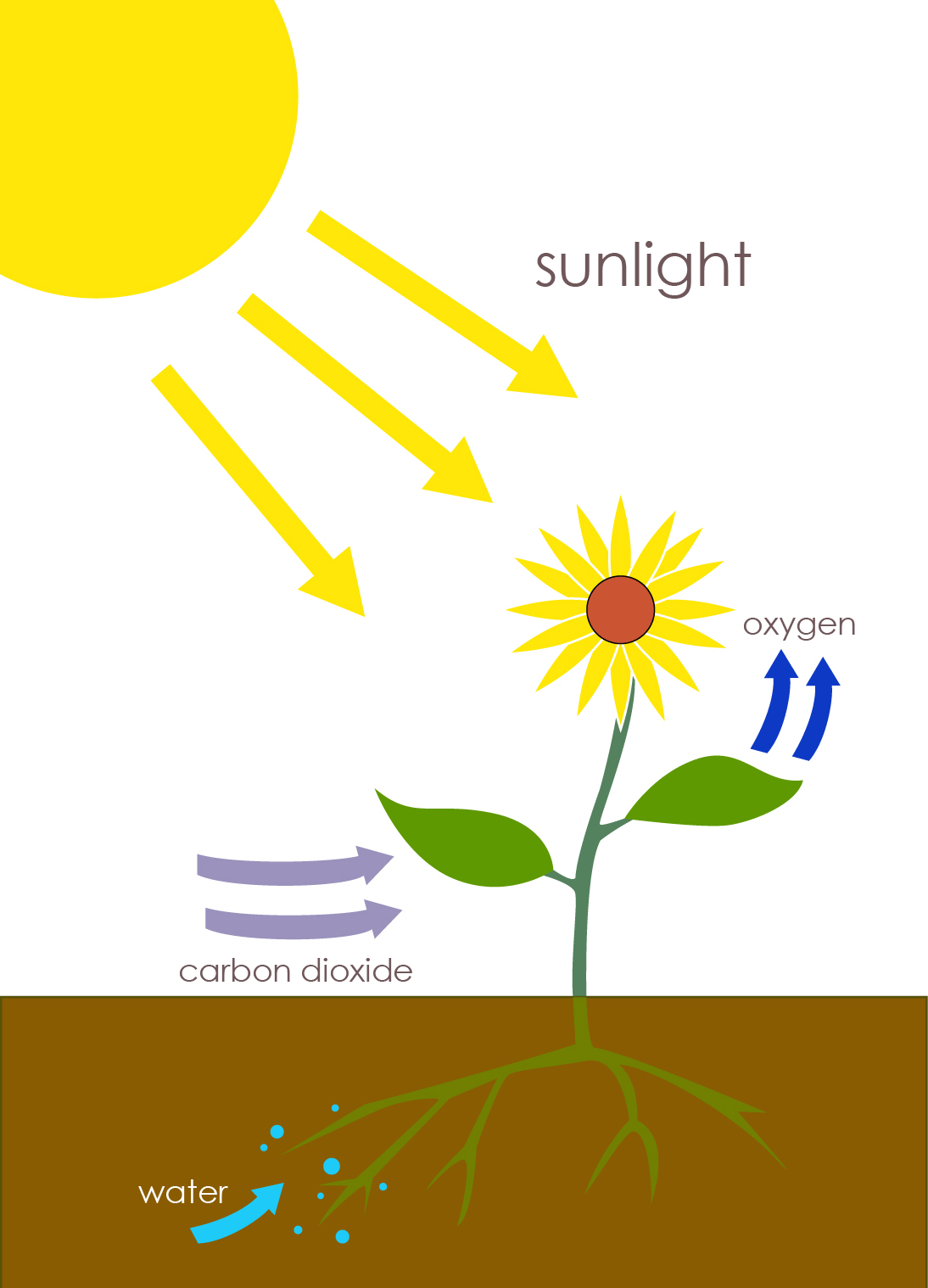Photosynthesis and Ecosystems 1/13/18
Summary:
This week in science we learned about photosynthesis and ecosystems through taking notes and completing assignments. What I now know about photosynthesis is a true definition of photosynthesis. This definition is, "Photosynthesis is an endothermic process by which plants and organisms make sugar (glucose) to store energy." I also know the (balanced) chemical formula for photosynthesis. The balanced chemical formula is 6CO2 + 6H2O —> C6H12O6 + 6O2 and because this is a chemical formula it doesn't show one important missing piece/part of photosynthesis. This missing part/piece is sunlight. I also now know the exact opposite of photosynthesis and a good way to define it. The opposite of photosynthesis is cellular respiration, cellular respiration is an exothermic process by which organisms release the energy stored on food (glucose). I also now know why photosynthesis is important. Photosynthesis is important because without it, almost all (if not all) oxygen dependent life would probably die. Photosynthesis is how plants get energy, they then release that energy to humans and other life (oxygen) which we then breath in. Then when we breath it out (cellular respiration) it will turn back into carbon dioxide in which the plants will again use to create energy and so on. Which is why photosynthesis is important. What I now know about ecosystems is the two different parts to an ecosystem, the biotic and abiotic factors. Biotic factors are all the living parts of an ecosystem while abiotic factors are the exact opposite in which abiotic factors are all of the non living things in an ecosystem. I also know some of examples of the two, biotic factors are things such as plants, animals, insects, and bacteria while abiotic factors are things such as sun and heat, water, and rocks. I also learned that the thing ecosystems need most of are producers (plants), this is due to the fact that the more producers an ecosystem has, it will provide more energy for every type of consumer (primary, secondary, tertiary, and quaternary consumers, also decomposers). But if we have less producers, their will not be enough energy for all types of consumers. This is due to the fact that only 10% of energy is passed on to each level. Meaning that if producers had 1000 calories, the primary consumers would only have 100 calories, also meaning that the secondary consumers would only have 10 calories, and so on. Everything that I now know about photosynthesis and ecosystems is based on/because of what I learned throughout this week in science.
S&EP 2-Developing & Using Models:
I used models to explain experiments I conducted within an ecosystem simulator. My model explained 3 different trials in which for each trial I chose how many of each organism their was going to be in the ecosystem. The three organisms I got to change were the amount of rabbits, grass/plants, and foxes their were in the ecosystem. My model showed how much of each organism I started with, and how much I ended with after 50 years (in the simulation). The model I used really helped me see and understand how an ecosystem can be affected if there isn't a balance between all organisms. For example, in my first trial I started with 200,000 grass, 4,000 rabbits, and 200 foxes. I ended with 123,104 grass, 8,069 rabbits and 129 foxes. As you can see the organisms weren't very balanced out at the end, the rabbits population doubled and the fox population dropping immensely which is not very stable. Most importantly, my model really represents and shows how an ecosystem can be affected if the populations of organisms are not stable.
XCC-Energy & Matter:
In science this week I realized how energy and matter are related to the system of photosynthesis and cellular respiration. Energy and matter are related to this system because of the fact that this system needs energy and matter for the system to work. Also because energy and matter are both main parts in this system. The matter in this system is plants and humans, and the energy in this system is what is passed on through the system (carbon dioxide, sunlight, and more). Plants (matter) are given energy from the sun and carbon dioxide which they then release some of that energy to humans (photosynthesis). The humans (matter) then take that energy (oxygen) and breath it in, and then when they breath it out (cellular respiration) the plants then take that energy back (carbon dioxide) and use it for their energy. Then that cycle continues to go on and on because of the energy and matter in the system.
 |
| Link |
Multiplier-Initiator:
This week in science I was the initiator due to the fact that continued to ask questions about photosynthesis. I have learned about photosynthesis before but I never really understood it completely. This is why I was asking questions about it, I felt that in order for me to truly learn and understand photosynthesis I would have to ask questions. So I asked my teacher questions during class discussions and I asked my friends/tablemates. I was constantly asking, "Do you Know?" questions. I really wanted to understand this subject because I knew we had to truly understand photosynthesis in order to complete the assignments we were going to do. The questions I asked were very helpful for me to truly grasp the subject of photosynthesis. Without my questions, I truly believe that I wouldn't of known anything of what I said in my summary when I talked about photosynthesis. tions really helped me to become much more knowledgable on the subject of photosynthesis. This is why I was the initiator this week in science.
Comments
Post a Comment